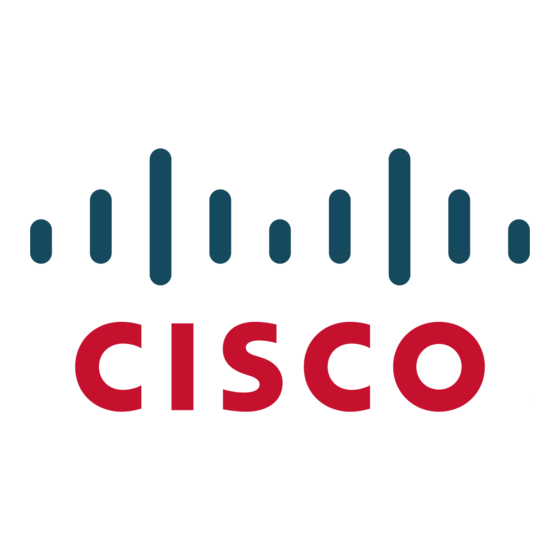Cisco AIR-AP1800I-Z-K9 Руководство по началу работы - Страница 16
Просмотреть онлайн или скачать pdf Руководство по началу работы для Беспроводная точка доступа Cisco AIR-AP1800I-Z-K9. Cisco AIR-AP1800I-Z-K9 43 страницы.

10
Configuring and Deploying the Access Point
This section describes how to connect the access point to a wireless LAN controller. The configuration
process takes place on the controller. See the Cisco Wireless LAN Controller Configuration Guide for
additional information.
The Controller Discovery Process
The access point uses standard Control and Provisioning of Wireless Access Points Protocol
(CAPWAP) to communicate between the controller and other wireless access points on the network.
CAPWAP is a standard, inter-operable protocol which enables an access controller to manage a
collection of wireless termination points.
The discovery process using CAPWAP is identical to the Lightweight Access Point Protocol (LWAPP)
used with previous Cisco Aironet access points. LWAPP-enabled access points are compatible with
CAPWAP, and conversion to a CAPWAP controller is seamless. Deployments can combine CAPWAP
and LWAPP software on the controllers. For additional information about the discovery process and
CAPWAP, see the Cisco Wireless LAN Controller Software Configuration Guide. This document is
available on Cisco.com.
• CAPWAP support is provided in controller software release 5.2 or later. However, your
Note
controller must be running the release that supports 1800i series access points, as
specified in the Cisco Wireless Solutions Software Compatibility Matrix:
https://www.cisco.com/c/en/us/td/docs/wireless/compatibility/matrix/compatibility-matri
x.html#pgfId-147162.
• You cannot edit or query any access point using the controller CLI if the name of the access point
contains a space.
• Make sure that the controller is set to the current time. If the controller is set to a time that has
already passed, the access point might not join the controller because its certificate may not be
valid for that time.
The functionality provided by the controller does not change except for customers who have Layer 2
deployments, which CAPWAP does not support.
In a CAPWAP environment, a wireless access point discovers a controller by using CAPWAP discovery
mechanisms and then sends it a CAPWAP join request. The controller sends the access point a
CAPWAP join response allowing the access point to join the controller. When the access point joins
the controller, the controller manages its configuration, firmware, control transactions, and data
transactions.
16
